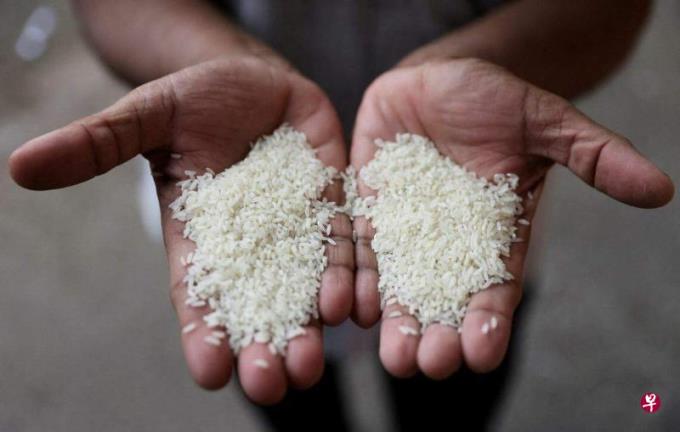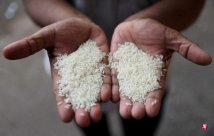
After the outbreak of the Russian and Ukraine War in February last year, the international rice price remained stable, but it continued to rise since September last year.Scholars believe that the rise in rice prices is caused by multiple factors, including the unstable fertilizer supply of the Russian and Ukraine War, the phenomenon of Elnino affects rice output, and India prohibit rice exports in order to control food inflation.Various factors have led to insufficient market confidence, resulting in the accumulation of rice merchants and raising prices, and the World Trade Organization failed to intervene in time.
However, scholars believe that if the world's major rice exporters can make confidence in stable, although the price of rice will continue to rise, it should not break out of the food crisis.
Why is India prohibited from exporting rice?
After the prohibition of fragile rice from India last year was prohibited from exports, non -Bass Martimi exports were prohibited on the 20th of last month.India is the world's largest rice exporter, accounting for more than 40%of the global exports. Its series of actions have pushed the international rice price.
The cost of life in India has continued to rise. Among them, the price of rice has risen by more than 30%since October last year, which has brought challenges and pressure on the governors, especially considering that the election will be held early next year.
Scholars believe that the Indian government prohibits rice from exports to curb domestic rice prices and inflation to increase the chance of Prime Minister Modi in the national election.
Another Michael Patriotic Thailand is expected to be reappeared in the second half of this year, facing the threat of long -term drought.In order to cope with the problem of lack of water, Thailand officials have called on rice farmers to reduce farming rice to save water.
In addition, India's annual monsoon becomes irregular and disrupts agricultural production.The severe flood in Pakistan also impacted the rice harvest.
Zheng Elika, a Bank of Malayan Bank, told the National Broadcasting Corporation (CNBC) business channel: "We will be alert to the weather mode of El Niopy ... It is expected that the El Nino phenomenon in the second half of the year will cause agricultural supply to be more disturbed."
On the other hand, Russia last month Exit the Black Sea Food Agreement ,Affects grain exports and pushes international food prices.The Russian and Ukraine War also led to unstable fertilizer supply and directly affecting farmers' grain.
Will the food crisis burst with rice as a staple food country?
Experts point out that the increase in rice prices has the greatest impact on low -income families, because most of the income of this group is used to buy food, and the price of food is constantly rising, and they may eventually reduce expenses in other aspects.
According to the analysis of Nomura Securities, the Philippines is one of the countries that are most likely to be affected by soaring food, because of its inflation rate, the proportion of food inflation is quite high.
However, analysis generally believes that although the price of rice will continue to rise, most countries in Asia can withstand the impact of rice supply.
Economist Zheng Elika pointed out that Asian countries such as Thailand, Vietnam, Myanmar, and Cambodia are rice net exporters and China is the largest rice consumer market in the world, but only 1%of rice is imported from Vietnam and Myanmar.India's reduction of exports on China is "very small".
She also believes that although the rice -producing area in northeast China faces floods, China's rice inventory should be able to cope with domestic demand.
Research from the Studies of the Public Policy of the National University of Australia, the Studies of the National University of Crowford, pointed out that Vietnamese rice harvested this year and can fill in some gaps caused by India's prohibition of exports.
How to stabilize confidence and rice price?
Food issues believe that preventing the speculative purchasing rice from major imported countries is an important part of the stable market and price trend.Countries can also take action to crack down on the accumulation and raising price of Merchant.
Harvard Honorary Professor Timo took the 2008 Global Food Price Crisis as an example. Japan became a key country to supplement the gap in rice supply in that year, prompting rice prices to return to normal, and avoiding a far -reaching crisis.
Timo said that if India promises to fully fulfill the rice supply contract with Indonesia, it can appease the market.India signed a contract with Indonesia with an export of 1 million tons of rice before banning non -Basdimi exports.
Timo published a comment at the East Asia Forum of the National University of Australia, "The biggest problem now is whether the price of rice will gradually rise, allowing consumers to slowly adapt to the new rice price without panic, or the rice price will be the meeting will beRising rapidly? Since India announced its export ban in July, it has rarely caused panic. It can be seen that rising rice prices should be gradual and controllable. "



